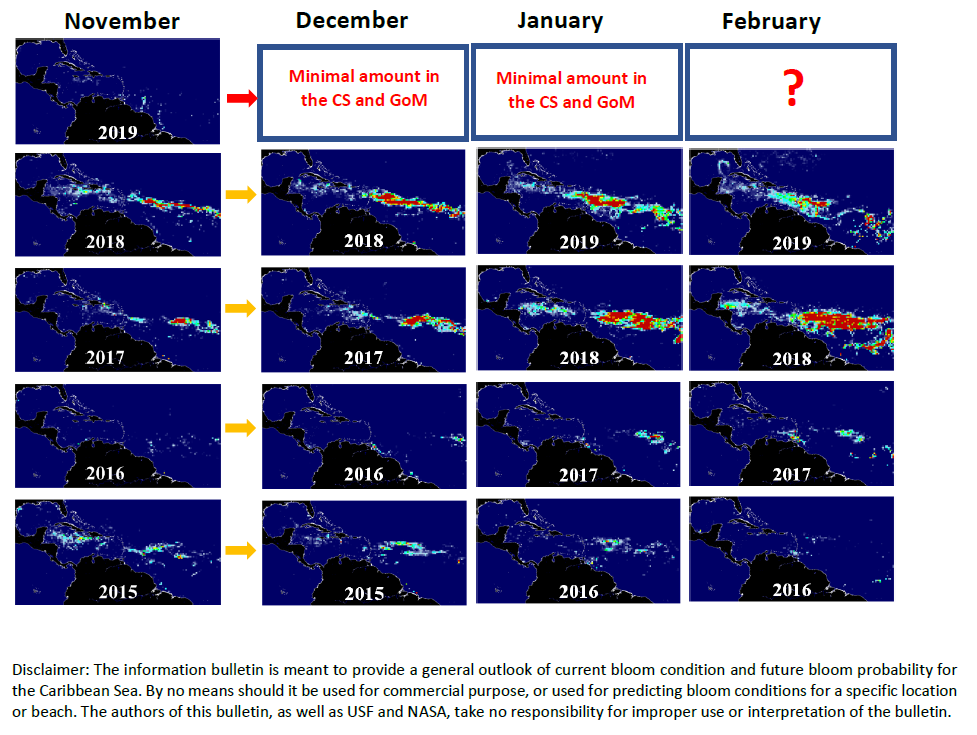The maps above show Sargassum abundance, with warm colors representing high abundance.
November 2019 continued the situation of October 2019. Very little Sargassum was found in the Gulfof Mexico (GOM), Florida straits, Caribbean Sea (CS), and Central West Atlantic (CWA). In all regionscombined, the Sargassum amount reduced to ~0.5 million metric tons in November 2019 from 1.5M tons in October 2019. This amount is similar to that in November 2016 (0.7M tons) and much lower han in November 2017 (2.0M tons), November 2015 (1.5M tons), or November 2018 (3.2M tons). Most of the Sargassum mats are currently aggregated in the east tropical Atlantic (not shown in themaps above).
Looking ahead, because the Sargassum amounts in all regions above (except the east tropical Atlantic) have continued to decrease and because there is currently minimal Sargassum amount in the CWA, we predict that all regions will experience minimal or no beaching events in December 2019 and possibly January 2020. However, because there is still some Sargassum in the east tropical Atlantic, if these Sargassum are transported to the west following the equatorial current, the Sargassum amount in the CWA may increase in spring 2020. We will keep a close eye on how Sargassum in the east tropical Atlantic may evolves in the next two months.
More updates will be provided by the end of December 2019, and more information and near real-time imagery can be found under the Sargassum Watch System
(SaWS, https://optics.marine.usf.edu/projects/saws.html).
Outlook of 2019 Sargassum blooms in the Caribbean Sea and Gulf of Mexico – December 1, 2019



